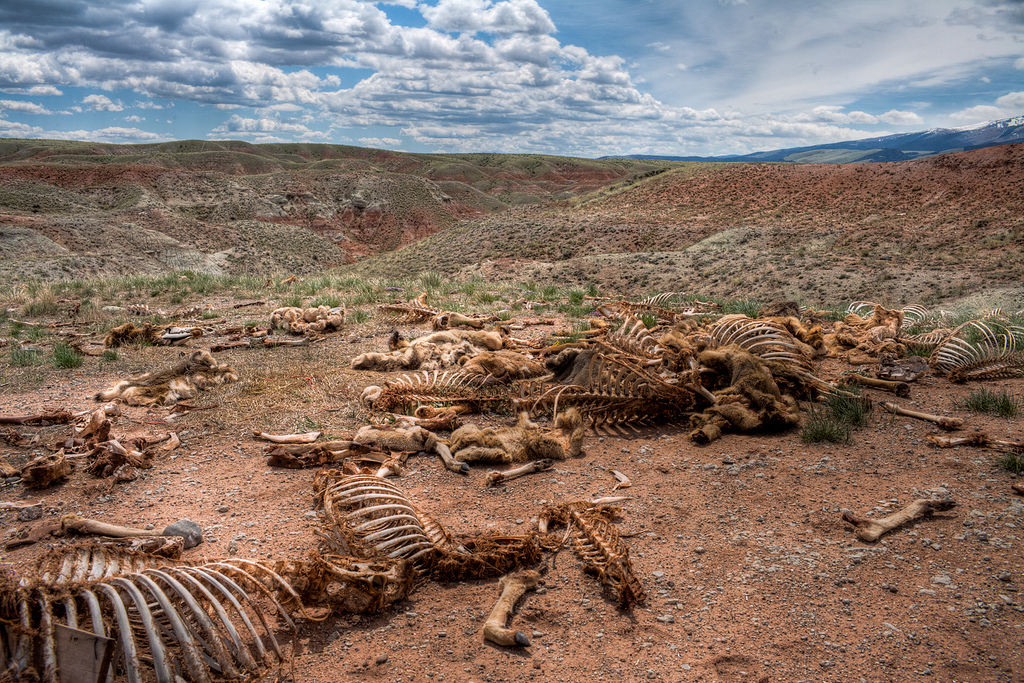
Image: Greg Westfall (https://www.flickr.com/photos/imagesbywestfall/5855284480)
Phosphorus can be a limiting factor in crop yield here in the Pacific Northwest, as in agriculture globally. But OSU is now broadly recommending that organic farmers watch their phosphorus inputs. In consulting with our local farmers, they often find that phosphorus has routinely been kept too high. (Their new recommendation is to keep P < 50ppm.)
What are the risks of over-applying phosphorus? After all, a plant does not uptake it excessively. However, runoff and leaching of phosphorus damages our waterways and aquatic life. It causes eutrophication, or hypoxia. One very visible example of this is the dieoff in the Gulf of Mexico. Read about it here, from the NOAA.
Additionally, there is the question of sourcing our phosphorus. The phosphorus cycle in our environment is very slow, comparatively speaking. It does not enter the atmosphere, but cycles from the soil into mineral and animal forms (bones). What this means is that the phosphorus that leaches or runs off from our soils does not return to its rock form for generations, becoming lost to us as a fertilizing agent. Soft rock phosphate is a non-renewable resource, like fossil fuels, and we can only mine it for so long before it is gone. Synthetic triple superphosphates depend on soft rock phosphate, from which they are made. Already, concerns about its scarcity have ignited geopolitical conflict in the Western Sahara, where most of the world’s reserves are found. (Substantial deposits in Australia and Florida have mitigated the alarm over peak phosphorus.)
But there are alternatives to soft rock phosphate and its synthetic progeny, triple superphosphate. Phosphorus is also available in a so-called “recycled” form in amendments like bone meal and fish bone meal. In fact, pound-for-pound, this phosphorus is generally more affordable than soft rock phosphate. Further, being derived from animal material rather than rock, it is more readily and quickly available to plants, meaning it is more appropriate for our purposes. And finally, it saves us from mining more of the rock out of the ground, getting more mileage from the phosphate we have already mined by reusing it.
Bones have been an source of phosphorus since ancient times. Mesoamerican and Mesopotamian archaeology attests to the practice of calcinating an enemy’s skeleton for use as a whitewash or fertilizer– consider Amos 2:1. Ancient cultures seemed to have some understanding that battlefields, watered with blood and dusted with bones, held extra fertility. And in the 19th century, England ran a bustling trade in the post-battle market for human bones, whether the source was Waterloo post-Napoleon, or Egypt’s catacombs. See this article from 1829, scroll down to “traffic in human bones.”
How much phosphorus do you apply? Do certain crops respond more than others? What amendments provide it on your farms? What arrangements have you made for the disposal of your skeleton?
